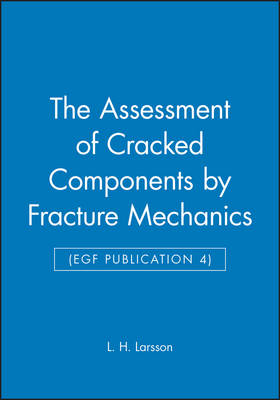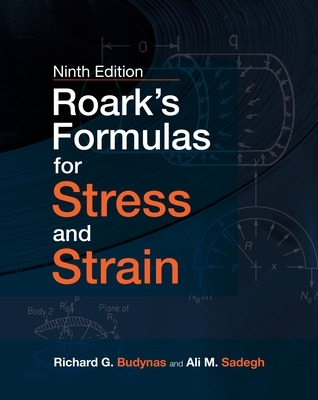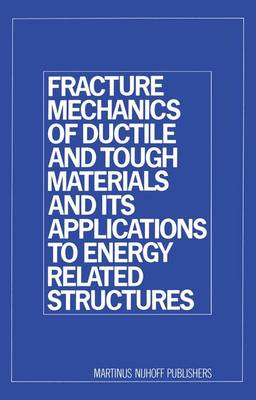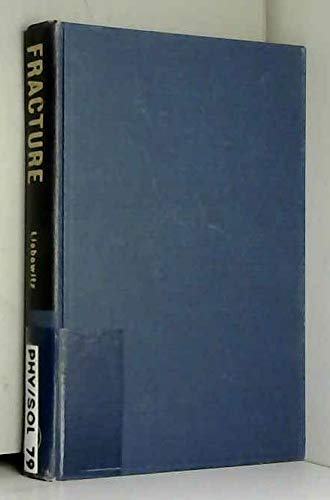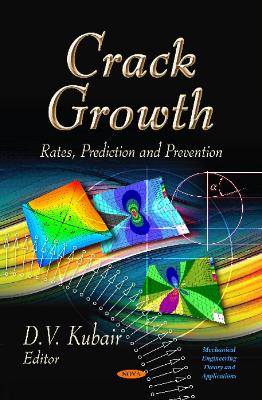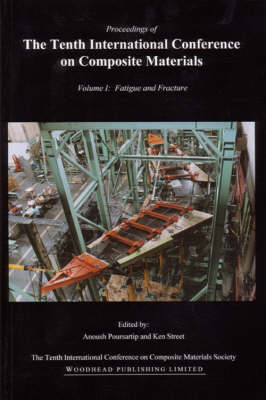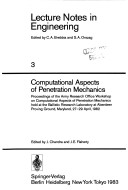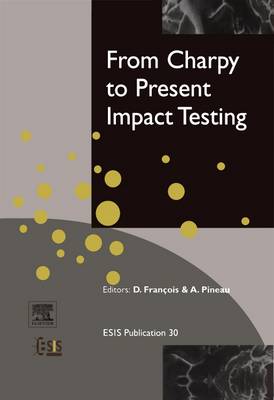The Assessment of Cracked Components by Fracture Mechanics (EGF Publication 4)
Fracture mechanics is an important ingredient in the safety analysis of structures, and this publication contains all the papers presented at the 6th Advanced Seminar on Fracture Mechanics (ASFM 6) and is published as part of the European Group on Fracture Series.
Publisher's Note: Products purchased from Third Party sellers are not guaranteed by the publisher for quality, authenticity, or access to any online entitlements included with the product.The industry-standard resource for stress and strain formulas―fully updated for the latest advances and restructured for ease of use This newly designed and thoroughly revised guide contains accurate and thorough tabulated formulations that can be applied to the stress analysis of a comprehensive range of stru...
The effect of ship impact on the load carrying capacity of steel tubes (Offshore technology report, OTH 90 317)
by J.D. Allan and J Marshall
Risk assessment and risk analysis are now firmly fixed in the engineer's lexicon. Every engineering project, contract, piece of equipment and design requires this discipline by law. Reliability is the other key element in the mix for smooth running engineering projects and operations. In the modern industrial era, economic factors have resulted in the construction and operation of larger and more complex process plant. Accidents at these types of plants have led to notorious incidents such as Fl...
All-European Study on Education for Democratic Citizenship Policies
by Of Europe Council
Prestressed Concrete
Fracture Mechanics of Ductile and Tough Materials and Its Applications to Energy Related Structures
by H.W. Liu
Size-Scale Effects in the Failure Mechanisms of Materials and Structures
by Alberto Carpinteri
Static and Dynamic Fracture Mechanics (Computational Engineering S.)
The science of fracture mechanics has important practical significance in engineering, since it provides a rational basis for the calculation of the strength of cracked structures and the determination of growth rates of cracks in fatigue. Its use enables components, which may contain crack-like flaws, to be designed with greater safety margins, thereby reducing the risk of in-service failures. This volume covers the numerical methods used in theoretical and applied fracture mechanics. Topics in...
Fatigue and Fracture at Elevated Temperatures (Aerospace Division AD - Proceedings, v. 50)
Earthquakes and Acoustic Emission (Balkema-Proceedings and Monographs in Engineering, Water, an)
Earthquakes are caused by the sudden release of energy during the fracture of stressed rock within the Earth‘s crust. This phenomenon is similar to that which occurs in materials under load, and although they take place on very different scales, these two phenomena - earthquakes in geophysics and damage in structural materials - have similarities.
This book fulfills the need for a short, modern, introductory text on linear elastic fracture mechanics and its engineering applications. Suitable for use by engineering undergraduates, and other newcomers to the subject, it:- ? Explains the main ideas underlying present day linear elastic fracture mechanics and how these have been developed. ? Shows how the ideas can be used to carry out calculations answering the question 'Does this crack matter?' from the viewpoint of an engineering designe...
Mathematical Methods and Models in Composites (Computational and Experimental Methods in Structures)
Crack Growth
The engineering necessity of fracture mechanics is to improve the empirical data-handbook style and mechanics of materials based design. This book examines the phenomenon of "crack growth". The contributed chapters in this book have been derived from various research groups' results from their experiments and/or simulations of crack growth in various media. The contributed chapters discuss the effect of inhomogeneity, plasticity effects in single crystals, interfaces and welded joints. The book...
This volume contains the papers presented at the IUT AM Symposium of "Mesoscopic Dynamics of Fracture Process and Materials Strength", held in July 2003, at the Hotel Osaka Sun Palace, Osaka, Japan. The Symposium was proposed in 2001, aiming at organizing concentrated discussions on current understanding of fracture process and inhomogeneous deformation governing the materials strength with emphasis on the mesoscopic dynamics associated with evolutional mechanical behaviour under micro/macro mut...
Crack Tip Stress Fields (Milestone)
Topics in this volume include: Westergaard stress functions for severe periodic crack problems; the stress intensity factors and crack profiles for centre and edge cracks in plates subject to arbitrary stesses; and central crack in plane ortotropic rectangular sheet.
Computational Aspects of Penetration Mechanics (Lecture Notes in Engineering, #3)
From Charpy to Present Impact Testing (European Structural Integrity Society, #30)
by A. Pineau
From Charpy to Present Impact Testing contains 52 peer-reviewed papers selected from those presented at the Charpy Centenary Conference held in Poitiers, France, 2-5 October 2001. The name of Charpy remains associated with impact testing on notched specimens. At a time when many steam engines exploded, engineers were preoccupied with studying the resistance of steels to impact loading. The Charpy test has provided invaluable indications on the impact properties of materials. It revealed the br...
The first book of the 3-volume set on Fracture Mechanics is mainly centered on the vast range of the laws of statistical distributions encountered in various scientific and technical fields. These laws are indispensable in understanding the probability behavior of components and mechanical structures that are exploited in the other volumes of this series, which are dedicated to reliability and quality control. The author presents not only the laws of distribution of various models but also the t...
